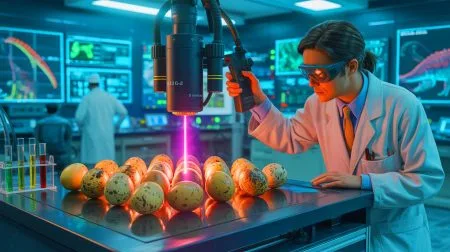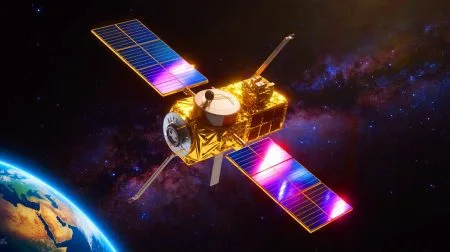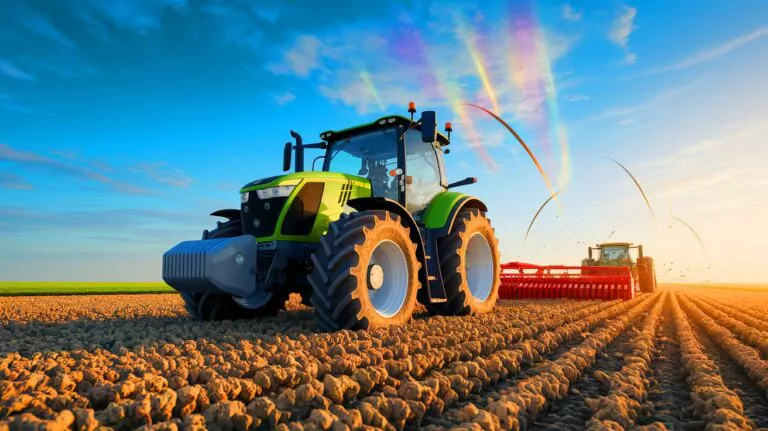| IN A NUTSHELL |
|
The agricultural sector, once reliant solely on traditional farming techniques, is now deeply intertwined with modern technology. However, when cosmic phenomena such as solar storms disrupt these technological advancements, farmers face unforeseen challenges. Recently, these solar storms have caused intelligent tractors to behave erratically, affecting productivity and precision farming techniques. This article delves into the causes of these disruptions and explores potential solutions to safeguard the future of agriculture.
Solar Storms: An Invisible Threat
Solar storms are a result of intense solar activity, primarily during the Sun’s 11-year cycle. During peak activity, the Sun releases powerful streams of charged particles that reach Earth. These particles interact with the Earth’s atmosphere, especially the ionosphere, leading to disruptions in various communication systems. GPS systems, which rely heavily on satellite signals, are particularly vulnerable to these interferences. During a solar storm, these signals can be distorted or weakened, making navigation systems less accurate or even unusable.
For farmers, this inaccuracy translates to tractors losing directional control. The machinery, designed to maintain precise paths for seeding or harvesting, can deviate by a foot or more. Such deviations can significantly impact crop efficiency. This issue becomes more pressing during critical periods like planting season, where timing and precision are crucial for a successful harvest.
“Vanished in a blink” – This glacier’s disappearance, captured from space, shocks the world
From Smart Machines to Unpredictable Behaviors
Modern tractors have evolved into technological marvels, incorporating automated guidance systems based on GPS. These systems enable precision agriculture, optimizing land and resource use. However, recent solar storms have caused these smart machines to exhibit unpredictable behaviors. Farmers have reported instances of tractors stopping unexpectedly or zigzagging across fields, jeopardizing the quality of their work.
These incidents highlight the growing dependency of modern agriculture on technology. While these innovations have revolutionized the sector, they also expose it to natural uncertainties like solar storms. Farmers, who have invested in these technologies to enhance efficiency, now face a dilemma: how to continue reaping the benefits of these tools while minimizing associated risks?
Potential Solutions for a Resilient Future
In response to these challenges, engineers and researchers are diligently working on solutions. One promising avenue is the integration of artificial intelligence and machine learning into navigation systems. These technologies could enable machines to adapt to disruptions in real-time, thus reducing reliance on GPS signals.
Moreover, some companies are exploring the use of alternative signals or backup systems that can take over when GPS fails. The goal is to develop more robust systems capable of withstanding solar interferences while maintaining high precision. These innovations could benefit not only agriculture but also other sectors reliant on satellite technologies.
The Crucial Role of Space Weather Forecasting
Space weather forecasting is essential for anticipating the effects of solar storms. Agencies like NASA regularly monitor solar activity and provide alerts to affected sectors. This information allows farmers to prepare for potential disruptions.
By being informed in advance, farmers can adjust their work schedules, avoid peak storm periods, and minimize impacts on their operations. However, this requires close collaboration between scientists, engineers, and farmers to ensure that the information is not only available but also understandable and actionable.
Towards a More Resilient Precision Agriculture
As solar storms continue to impact our planet, it is crucial to implement strategies ensuring the resilience of precision agriculture. Agricultural technology developers must design systems that function effectively even under disturbed conditions. This might include innovations like more sophisticated sensors or software capable of compensating for temporary failures.
Furthermore, educating and training farmers on the risks associated with solar storms and the optimal use of technological tools is essential. By strengthening their knowledge, they will be better equipped to handle the challenges posed by natural phenomena and continue producing efficiently and sustainably.
The phenomenon of tractors “possessed” by solar storms underscores the growing interconnection between technology and agriculture. Although these disruptive events pose significant challenges, they also present opportunities for innovation and strengthening sector resilience. Advances in artificial intelligence and space weather forecasting could turn these challenges into catalysts for progress. The question remains: how will these technologies continue to evolve to ensure global food security in the face of cosmic whims?
Did you like it? 4.6/5 (24)








Wow, I never thought space weather could affect farming! 🌌🚜
Are there any other industries that are impacted by solar storms like this?
Thank you for bringing this to light. I had no idea solar storms could be so disruptive!
This sounds like the plot of a sci-fi movie! 👽
How often do these solar storms occur? Is it something we should worry about regularly?
Maybe the tractors are just trying to communicate with aliens? 😂
This is why we shouldn’t rely too much on technology. Back to basics, I say!
The role of AI in mitigating this issue is fascinating. Any updates on that front?
Do you have any data on how much crop yield has been affected due to these tractor issues?
Is this a global issue or is it more localized to certain regions?
I wonder if insurance covers “tractor possession by space” 🤔